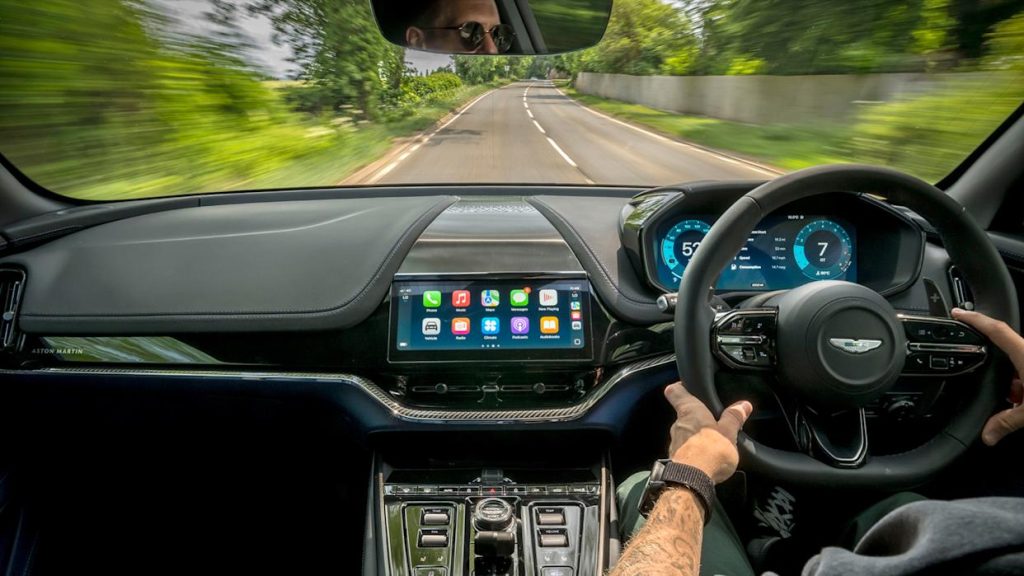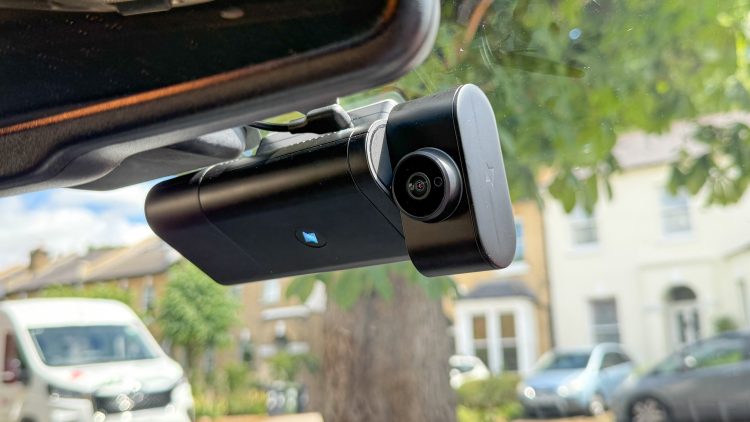From Passive Recording to Active Judgment
In 2025, dashcams are no longer just passive recorders mounted on a windshield. They have evolved into powerful AI-embedded assistants—capable of facial recognition, driver fatigue analysis, accident prediction, and even real-time behavioral scoring. What was once a simple camera for documenting accidents is now an active system evaluating every blink, turn, and reaction. The next-gen dashcam has become a co-pilot, watchdog, and in some cases, a silent judge.
This leap from visual recording to intelligent monitoring reflects broader shifts in car technology. As more vehicles integrate semi-autonomous features, and as insurance models move toward usage-based policies, dashcams are becoming central to how safety is enforced and how accountability is assigned. But as these devices grow smarter, they’re also raising new questions about consent, ownership of behavioral data, and where to draw the line between assistance and surveillance.
Face-First Safety: Biometric Recognition on the Road
One of the most striking features of 2025’s AI-powered dashcams is facial recognition. Cameras inside the cabin are now trained to identify registered drivers and monitor emotional states—detecting fatigue, stress, distraction, or even micro-sleeps. If a driver’s eyelids flutter more than usual or their gaze shifts from the road for more than three seconds, the dashcam may trigger alerts, lock the screen, or alert emergency contacts.
Systems developed by companies like NextDrive and RoadIQ use neural networks trained on millions of driver profiles, ensuring that their alerts are adaptive rather than rigid. For instance, a user known to have a mild facial tic won’t be misclassified as drowsy. The result is a safer, smarter layer of assistance that kicks in when human awareness lapses.
But facial data collection also means new storage demands and vulnerability points. Where is this data housed? Is it encrypted? Who owns the emotional profile generated by months of driving? These questions are still catching up to the hardware, leaving privacy advocates uneasy about how behavioral models could one day be sold, shared, or subpoenaed.
Behavioral Analytics and Driver Scoring
In parallel with facial tracking, dashcams are increasingly evaluating overall driving patterns. Advanced devices now offer real-time driver scoring—tracking lane discipline, braking smoothness, turn sharpness, and reaction time. This score is then displayed in a gamified interface, nudging drivers to improve their safety rating over time.
Insurance providers are particularly enthusiastic. Some companies already offer lower premiums to drivers with high AI-verified scores, bypassing traditional claims-based assessments. Fleet operators are integrating similar systems to rank their drivers and incentivize caution. For ride-hailing platforms, these scores may become part of a broader driver profile, influencing ratings and shift eligibility.
However, scoring systems come with bias risks. Environmental conditions, car responsiveness, and even regional driving norms can distort results. What’s labeled “aggressive” in suburban France might be standard in Jakarta. And while some drivers might appreciate real-time feedback, others may feel constantly judged, leading to anxiety or overcompensation.
Real-Time Accident Prevention: The Dashcam as Co-Pilot
The integration of AI extends beyond judgment—it also offers active assistance. Modern dashcams can now detect nearby vehicles, predict possible collisions based on trajectory and speed, and alert the driver before a crash becomes inevitable. In some cases, they interface directly with a vehicle’s ADAS (Advanced Driver Assistance Systems), prompting emergency braking or evasive maneuvers.
What makes AI dashcams superior to traditional sensors is their contextual analysis. They don’t just see a moving object—they assess intent. A cyclist wobbling near the lane, a pedestrian making eye contact before crossing, or a tailgating car inching forward at a red light—all become behavioral data points. The dashcam’s job is no longer to react but to anticipate.
In cities with chaotic traffic and unpredictable human behavior, this level of predictive intelligence can drastically reduce accident rates. But it also brings dependency. Drivers may grow overly reliant on alerts and pay less attention, introducing new forms of risk if the system misfires or misses an edge case.
Privacy in the Passenger Seat
One of the most contentious aspects of AI dashcams is the silent surveillance of passengers. These systems often capture full in-cabin footage, including conversations, gestures, and phone activity. In shared mobility or carpooling scenarios, not all occupants are aware they’re being recorded—or analyzed.
Some manufacturers now offer privacy modes or data masking for non-drivers, but implementation is uneven. The line between driver safety and passenger rights remains blurry. For families, this might be a non-issue, but for commercial or rental scenarios, it can quickly become a legal landmine.
Further complicating matters is cloud syncing. Many devices auto-upload footage and behavioral logs to manufacturer servers for analysis, quality assurance, or law enforcement access. In countries without strict data governance laws, this means that sensitive in-car footage could be accessed by parties beyond the owner’s knowledge or consent.
Data Ownership and Insurance Integration
With behavior scores, biometric patterns, and trip footage all becoming monetizable assets, the question of ownership grows more urgent. Who truly owns the data? The driver? The manufacturer? The insurer? In 2025, most terms-of-service agreements default to the manufacturer, granting them broad rights to analyze and retain footage. Some agreements even allow third-party data sharing with advertisers or law enforcement.
This becomes even more controversial when insurance companies use dashcam data to deny claims. For example, a driver involved in a side-impact accident may be shown to have turned their head away from the road three seconds prior—triggering a clause that limits liability due to “driver inattention,” even if they had the right-of-way.
In this environment, what was intended as safety reinforcement may morph into risk management—shifting responsibility from insurers to the insured. Legal frameworks are lagging, and without user-rights regulations for automotive data, drivers remain in the dark about how their everyday actions might one day be used against them.

The Psychology of Being Watched
Beyond legality lies the psychological burden. Several studies in 2024 explored how AI surveillance changes human behavior. Drivers subjected to continuous gaze tracking and behavior scoring reported increased anxiety, reduced reaction times, and in some cases, “alert fatigue.” The constant sense of being evaluated—even by a machine—can trigger stress responses similar to high-pressure work environments.
For casual drivers and long-haul commuters alike, this raises an uncomfortable tradeoff: Is improved safety worth the erosion of spontaneity behind the wheel? The dashcam’s omnipresence transforms driving from a private space into a semi-public one—akin to being monitored by a silent, never-blinking backseat passenger.
Yet there are upsides. Some users—especially newer drivers or those with trauma—feel safer with AI monitoring. They treat the dashcam as a safety net, a digital ally that sees what they miss. For parents of teen drivers, these features are a source of peace. As with most tech, perception is shaped by trust.
AI Dashcams and the Courts
As legal frameworks catch up, dashcam footage is becoming a cornerstone of litigation. In 2025, AI-processed data is now accepted in courts across many jurisdictions—not just for accident reconstruction, but also for proving intent or negligence. Was the driver distracted? Was the pedestrian about to jaywalk? Did the vehicle issue a warning that was ignored?
This new evidence layer can be double-edged. For wrongfully accused drivers, it can prove innocence. But for others, it might reveal behaviors they’d rather keep private—like smartphone use or emotional outbursts. There’s also the potential for algorithmic error, where behavior is misclassified due to facial misreading, posing risks of misjudgment.
To address these concerns, some jurisdictions are mandating transparency in AI labeling and requiring manufacturers to offer opt-out features. But widespread adoption is still uneven. For now, users must read fine print carefully before installing these devices—especially when integrated directly into vehicles from the factory.
Ethical Design and the Road Ahead
As AI dashcams become standard features in new cars, the onus is on manufacturers to implement ethical, user-centric design. Features like facial recognition and driver scoring must include granular controls, transparent logs, and meaningful consent options. Default data collection should lean toward minimization, with clear opt-in choices.
Some companies are experimenting with “privacy halos”—visible dashboard signals indicating when and what data is being recorded. Others are exploring federated learning models, where data is processed locally and anonymized before being used for AI training.
The future of AI dashcams will not be determined by capability alone, but by the frameworks built around trust, accountability, and dignity. Drivers need to feel empowered, not exploited. Safety should not come at the cost of psychological ease and fundamental rights.
Conclusion: A New Layer of Intelligence, a New Set of Responsibilities
AI-powered dashcams in 2025 are powerful tools—enhancing safety, streamlining insurance, and unlocking real-time driver assistance. But they also usher in a new era of automotive surveillance and behavioral data commodification. As these cameras grow smarter, so too must the conversation around ethics, privacy, and ownership.
Drivers, regulators, insurers, and manufacturers now share a collective responsibility: to ensure that the pursuit of safer roads does not compromise the freedom and trust that driving has always represented. The dashcam has become more than a witness—it’s a decision-maker. And that makes the road ahead as challenging as it is intelligent.


































Discussion about this post